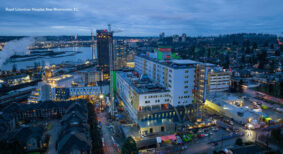According to recent B.C. Stats’ Labour Market Statistics the unemployment rate in British Columbia was 4.8 per cent. This was the second lowest in the country behind Quebec (4.5 per cent) and certainly lower than the national rate of 5.4 per cent. And yet, today’s labour market has never been so precarious.
With so much construction activity happening regionally, provincially and nationally, the demand for workers across every sector remains at an all-time high. Ten years ago, the numbers where somewhat different. In 2012, the unemployment rate in B.C. was 6 per cent while the construction sector was slightly higher at 6.4 per cent. Fast forward a few years to just prior to the pandemic (2018 and 2019) and we saw the lowest construction unemployment rates hover around 3.8 per cent. Amazing right? Well, for anyone working in our sector, this is certainly a challenge.
In 2012, the B.C. construction labour force was approximately 195,000 while investment in construction was approximately close to $20B. In 2022 that investment was nearly doubled and yet our labour force, according to a recent BuildForce labour report, was not much higher at 197,400. It is certainly clear that we are doing much more with fewer people. BuildForce estimates that by 2027 we will be short approximately 5,600 workers in the province, taking into account retirements and new entrants into our market. With so much construction activity going on, we are facing a labour challenge the likes that we have never seen.
Having worked in the construction field for roughly 30 years, I have never seen such uncertainty in our labour market. One only must look at the skyline to see that the number of construction cranes has never been higher. From single family residential projects to large scale industrial projects, our provincial demand for skilled trades is being significantly strained as companies struggle to meet this demand.
There is a stark reality that our workforce demands are just not being met and this is not just for the construction sector, but for all parts of our economy. Virtually every business is looking for help. With all this attention on our labour market, every sector is looking to attract workers. Long gone are the days where employment opportunities were limited to a few select sectors – manufacturing, agriculture, resource extraction, and of course, construction – now our sector is competing with a myriad of other industries eager to bolster their workforce. Add to that the housing challenge and cost of living in B.C. and we now have additional hurdles that makes attracting workers to our region even more difficult. Employers are literally pulling out all the stops. From billboards and radio advertising to job fairs and mailing campaigns, employers are working every technique they can to attract talent.
There is opportunity here as we look to appeal to our Indigenous peoples, women and immigrants. For example, this opens the doors to half of Canada’s population of able-bodied women to pursue careers in a stable, well-paying vocation with plenty of upward mobility. Within B.C., construction drives approximately 9.3 per cent of our provincial GDP and is ranked as our number one employer within B.C.’s goods sector. We are continuing to see trends for women entering the trades is growing. According to BCCA’s Spring 2022 Stat Pack, only about six per cent of women are employed in the different trades across the province. Women have not only proven that they are capable, but have also demonstrated exceptional capability, motivation and passion and can be extremely effective and competent within any tradecraft our industry offers.
Immigration is also a key element to keep up with demand. As many know, this process is both timely and costly and may not be a viable solution for a smaller company. The bureaucratic hurdles alone can be so daunting that companies elect to not pursue such efforts. We continue to advocate for efficient and effective immigration policies that allow all immigrant workers to access our local labour markets.
We need to cultivate our youth for this new labour era but there is an erosion of resources available to our school-age children to address our future needs. From eliminating shop classes to higher focus on academic achievement we must pique the interest of our youth as soon as possible. We view our middle school-aged children as key to growing the future skilled workforce that our sector will desperately need. With that in mind, we cannot think that taking away resources and proper learning environments such as shop classes will help this cause. A properly equipped shop class is of great benefit for all students particularly those who are, or may not be, academically minded but demonstrate a high aptitude for such skills or interests.
For those involved in construction, the pasture is ripe for harvest but we need the people to do this. The reality is that it will be a challenge. With the sector’s resilience, creativity and eagerness over the past few years, we will continue to meet construction demand, however it’s going to talk longer, and of course, cost more.
Rory Kulmala is CEO of Vancouver Island Construction Association.










